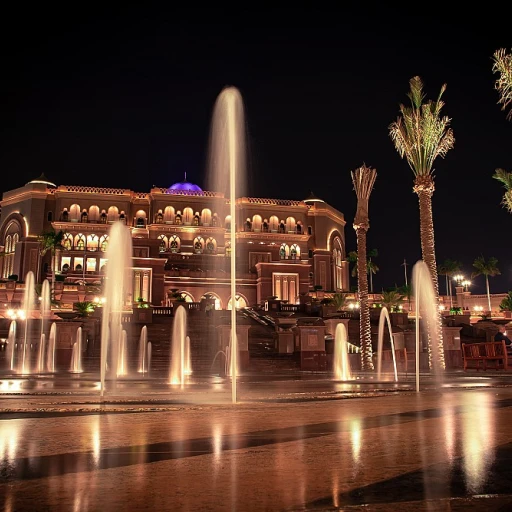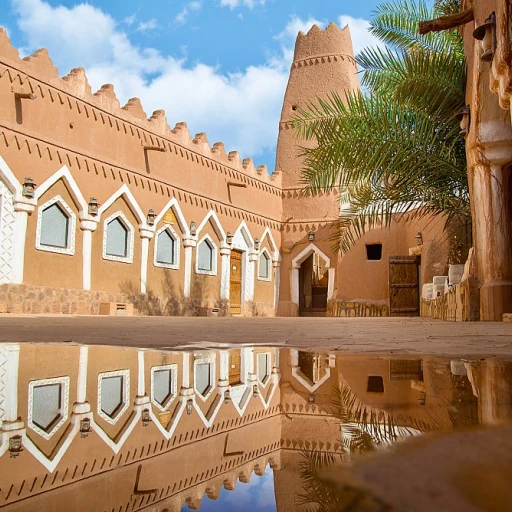The Essence of Bamboo Craftsmanship
Timeless Tradition in Bamboo Art
On the picturesque Lombok Island, nestled amidst the tranquil beauty of West Nusa Tenggara, the art of bamboo craftsmanship isn't just a skill; it's a way of life. This age-old tradition captures the essence of the island's culture and heritage, making it a must-see for anyone embarking on a day trip. A tour of Lombok reveals numerous bamboo handicraft villages, where the echoes of time resonate in each bamboo product meticulously crafted by hand.
Embarking on a trip to the heart of Lombok, one can't help but notice the unique blend of traditional techniques and natural materials that define bamboo craftsmanship here. From the vibrant loyok village to the serene landscapes of central Lombok, the island tells a story through its bamboo crafts. Witnessing the local artisans at work provides an experience unlike any other, as they transform raw bamboo into exquisite creations.
Craft workshops are an integral part of understanding this ancient skill. They afford travelers the opportunity to delve deeper and gain a hands-on appreciation of the artistry involved. Within the villages, every crafted piece is a testament to the dedication and skill passed down through generations.
It's this rich tapestry of history and art that attracts visitors, ensuring that each day tour to Loyok, Tetebatu, and beyond encapsulates the soul of Lombok's bamboo craftsmanship. A journey through this island's stunning rice terraces and beaches, accentuated by visits to its handicraft villages, offers an unparalleled peek into a vibrant cultural legacy.
Meet the Artisans
Connecting with the Heart of Lombok's Bamboo Artisans
Embarking on a journey to discover the intricate world of bamboo craftsmanship in Lombok means immersing yourself in the vibrant culture of this Indonesian island. As you venture into the heart of the handicraft village, you'll find yourself in Loyok, a place renowned for its traditional bamboo artistry. The artisans here are the soul of the craft, dedicating their lives to preserving and innovating this age-old tradition.
During your day tour, you'll have the opportunity to meet these skilled craftsmen and women who transform humble bamboo into exquisite works of art. They are the custodians of a legacy passed down through generations, each piece they create a testament to their dedication and skill. Engaging with these artisans offers a deeper understanding of the cultural significance of bamboo in Lombok and how it shapes the local way of life.
As you explore the village, you'll witness firsthand the meticulous process of crafting bamboo products. From the bustling workshops in central Lombok to the serene settings near the rice terraces, each artisan brings a unique touch to their creations. Whether it's a delicate basket or an intricate piece of furniture, the craftsmanship reflects the rich cultural tapestry of the island.
For those eager to delve deeper into this world, consider taking part in one of the many tours Lombok offers. These day trips often include visits to the iconic Mount Rinjani, the serene pink beach, or the lush Tetebatu and Sembalun areas, providing a holistic experience of the island's natural beauty and cultural heritage. Group sizes can vary, allowing for personalized interactions with the artisans and a more intimate experience.
To truly appreciate the artistry, consider joining a workshop where you can try your hand at creating your own bamboo handicraft. This not only supports the local economy but also provides a tangible connection to the island's rich tradition. For more insights on how to make the most of such experiences, check out our guide on unforgettable handcraft workshops tailored for travellers.
The Crafting Process
The Intricate Journey from Stalk to Art
Venturing into the heart of traditional craftsmanship in central Lombok, you'll find yourself immersed in the rich world of bamboo – a versatile material that has become synonymous with creativity and cultural heritage on the island. The crafting process is a meticulous art form passed down through generations, offering a window into the authentic village life. In villages such as Loyok, artisans dedicate their day to transforming raw bamboo into exquisite handicraft items. This journey begins with carefully selecting the bamboo, a critical step that relies on the expertise of the craftspeople to identify the finest stalks, ensuring durability and quality of the final product. Once selected, bamboo is meticulously sliced and shaped, an intricate process requiring patience and precision, not unlike the care employed by craftspeople in exclusive tours in distinct traditions. The raw material is then treated and dried under the sun, at times near the serene backdrop of Lombok's rice terraces. This natural drying process sets the stage for the artisans to carve, weave, and assemble their works of art. The diverse array of bamboo products ranges from practical items like kitchen utensils to intricate decorative pieces. When visiting a handicraft village during your Lombok island day trip, you'll witness firsthand how these crafts embody a fusion of tradition and innovation. The workshops often reveal age-old techniques that remain unchanged by time, providing an authentic experience for tourists and groups alike. As you explore this vibrant culture, the journey through different bamboo crafts, from simple designs to sophisticated artistry, becomes a testament to the enduring spirit of Lombok's communities. The unique craftsmanship experience not only enhances your appreciation for bamboo but also supports the creativity and livelihoods of these talented artisans.Innovations in Bamboo Design
Innovative Creations from Tradition
Bamboo craftsmanship in Lombok is not just a tradition; it's an evolving art form that continually seeks the creative junction between time-honored techniques and modern-day innovations. As you travel through the island, you'll discover a vibrant fusion of cultural heritage and contemporary design in towns like Loyok and Tetebatu. Here, amidst the breathtaking views of rice terraces and the majestic slopes of Mount Rinjani, craftsmen challenge the conventions of bamboo usage.
The artisans of these hamlets and handicraft villages employ time-tested methods to create newfangled bamboo products. Whether you're on a day tour through central Lombok or exploring the coastal beauty near the Pink Beach, you'll witness firsthand how villages have integrated utilitarian designs with artistic flair.
These innovations manifest in a variety of forms, such as luxurious home decor items, intricate art pieces, and functional everyday objects. On a visit to a traditional crafting workshop, you might see how the pliability of bamboo allows for bold experimentation. Expect to find everything from elegant furniture pieces to unique bamboo handicraft that incorporate elements inspired by the lush landscapes and waterfalls found throughout Lombok.
Exploring these creations is a testament to the dexterity and creativity rooted in the culture of Lombok Island. Whether you're on a day trip to West Nusa or a group tour to the crater rim of Sembalun, each piece tells a story of local ingenuity meeting global design sensibilities. By supporting these artisans, you're not just purchasing a product but investing in the sustainability and evolution of bamboo craft.
The Economic Impact
The Influence on Local Economies
Bamboo craftsmanship is more than an artistic expression; it is a vital contributor to the local economy of Lombok island. The traditional bamboo crafts that originate from villages such as Loyok and Tetebatu are not merely items of beauty, but essential economic drivers within these communities. The crafting of bamboo products is a time-honored skill passed down through generations, often serving as the primary source of income for many families. The international interest in sustainable and eco-friendly products has seen an increase in demand for these handcrafted items, such as intricately woven baskets and decorative pieces. This surge in interest not only supports individual artisans but also catalyzes the economic development of the village and its surroundings. Moreover, as tourists visit the picturesque Nusa Tenggara region, with its breathtaking Mount Rinjani and serene pink beach, they are drawn to these unique cultural artifacts. The tours that include a stop in a handicraft village like Loyok allow travelers to purchase directly from the creators, ensuring that the profits go directly to the artisans. Day trips and group tours often include these authentic experiences, letting visitors witness the craftsmanship firsthand while providing financial support to the local economy. Semetres such as the scenic rice terraces, the stunning crater rim of Mount Rinjani, and the alluring waterfalls in East Lombok attract visitors year-round. Coupled with the cultural richness found in these handicraft villages, the continuous influx of tourists allows for a sustained economic impact that extends beyond mere transactions. It supports the preservation of cultural heritage, encourages innovation in bamboo design, and welcomes a broader global appreciation for Lombok’s indigenous art forms. In summary, the bamboo craft industry on Lombok island doesn’t just sustain livelihoods; it breathes life into the cultural tapestry of the West Nusa region, making each visit a journey through tradition, artistry, and economic vitality.How to Support Bamboo Crafts
Ways to Engage and Promote Bamboo Craftsmanship
To truly immerse yourself in the beautiful artistry of bamboo, consider these actionable steps to support the local artisans and preserve this traditional craft:- Participate in a Day Tour: Visit a bamboo handicraft village like Loyok or explore the vibrant atmosphere of Tetebatu to witness the intricate bamboo crafting process firsthand. These day tours often feature visits to traditional villages and allow you to engage with artisans directly.
- Engage with Local Artisans: Whether you're in central Lombok, exploring the lush rice terraces of east Lombok, or trekking near the crater rim of Mount Rinjani, take the opportunity to connect with craftsmen. Learn from their experience and appreciate the blend of tradition and innovation that defines their work.
- Purchase Bamboo Products: Support the local economy by purchasing handmade bamboo goods. Whether it’s a decorative piece or a functional item, your purchase helps sustain this age-old craft and injects economic vitality into the region.
- Spread the Word: Share your experiences of visiting the bamboo villages and engaging with artisans on social media. This can create more awareness and appreciation for bamboo craftsmanship, ultimately boosting the economic impact on the region.
- Plan a Group Tour: Organize a visit with friends or family groups. This not only makes the experience more enjoyable due to shared experiences but also maximizes the impact on local communities. Explore locations like the pristine Pink Beach or the serene Gili islands while incorporating bamboo craftsmanship into your itinerary.






